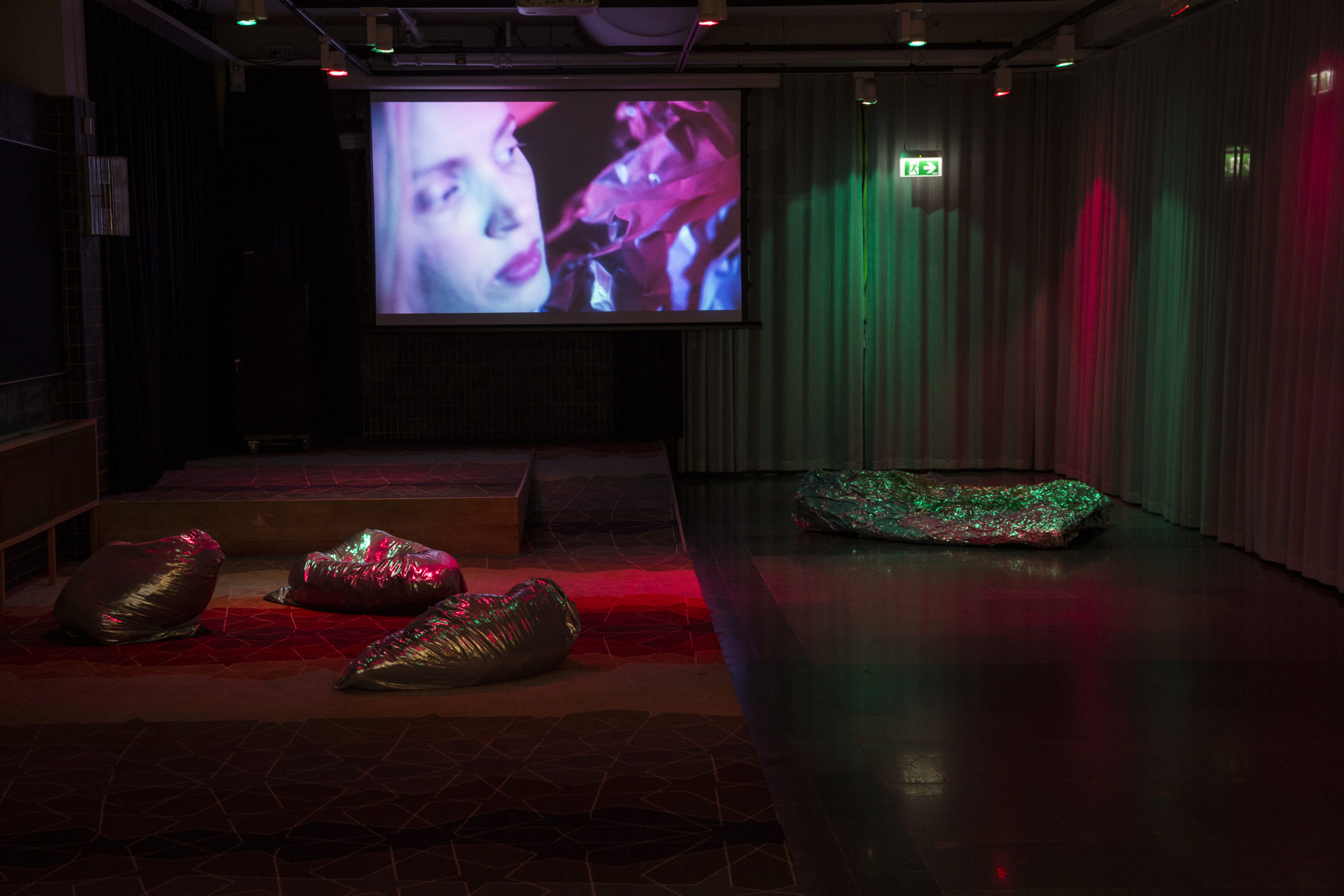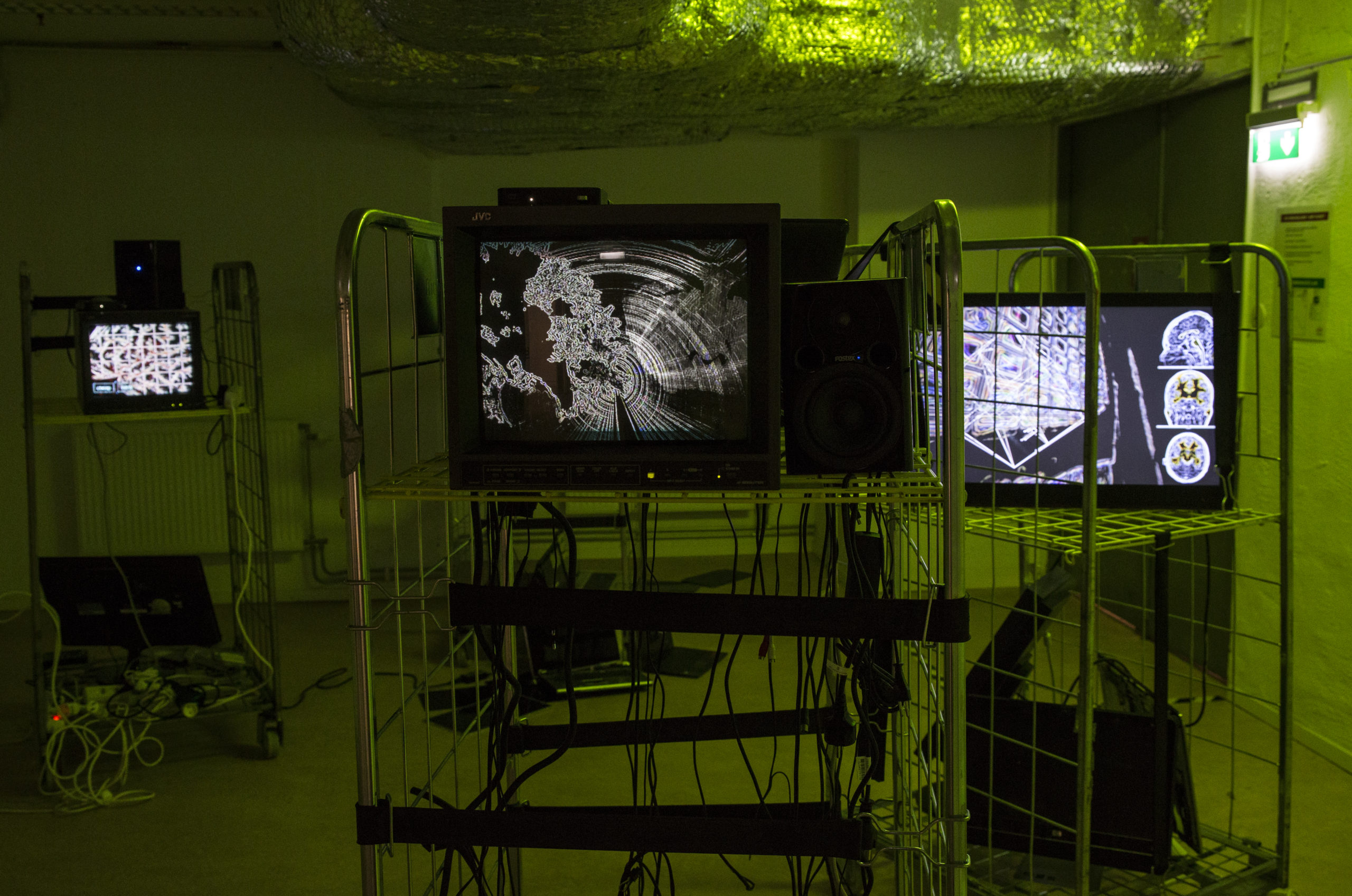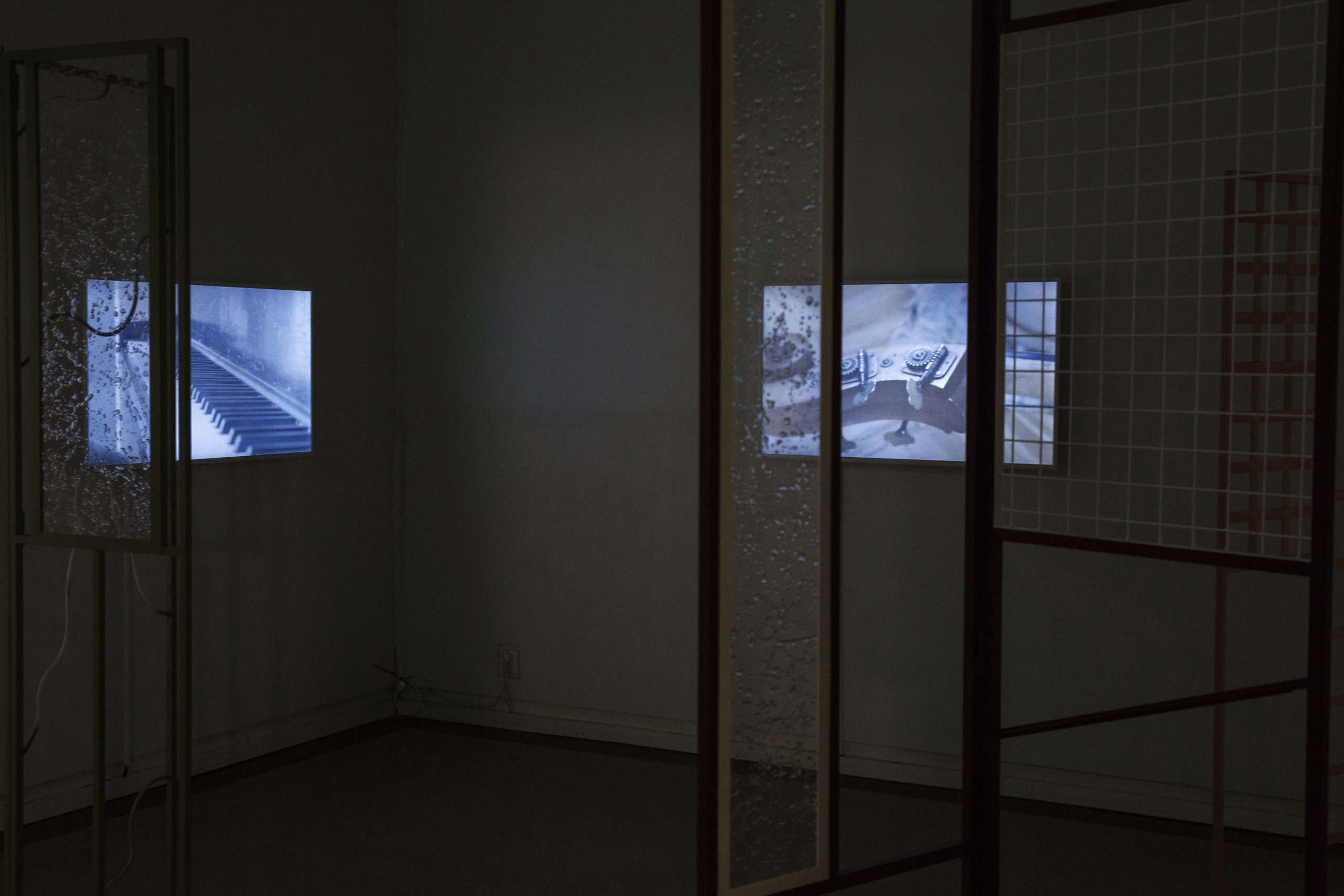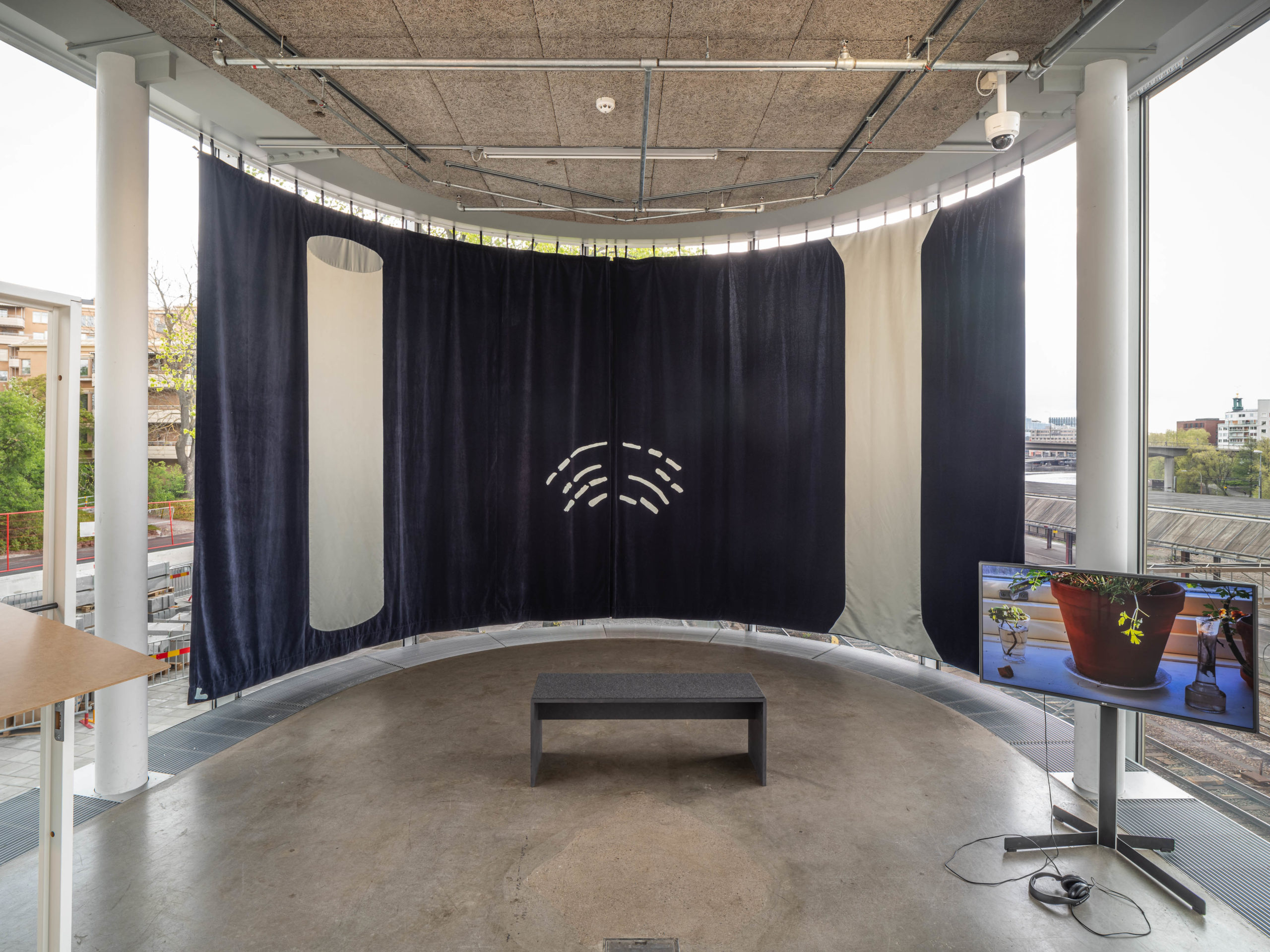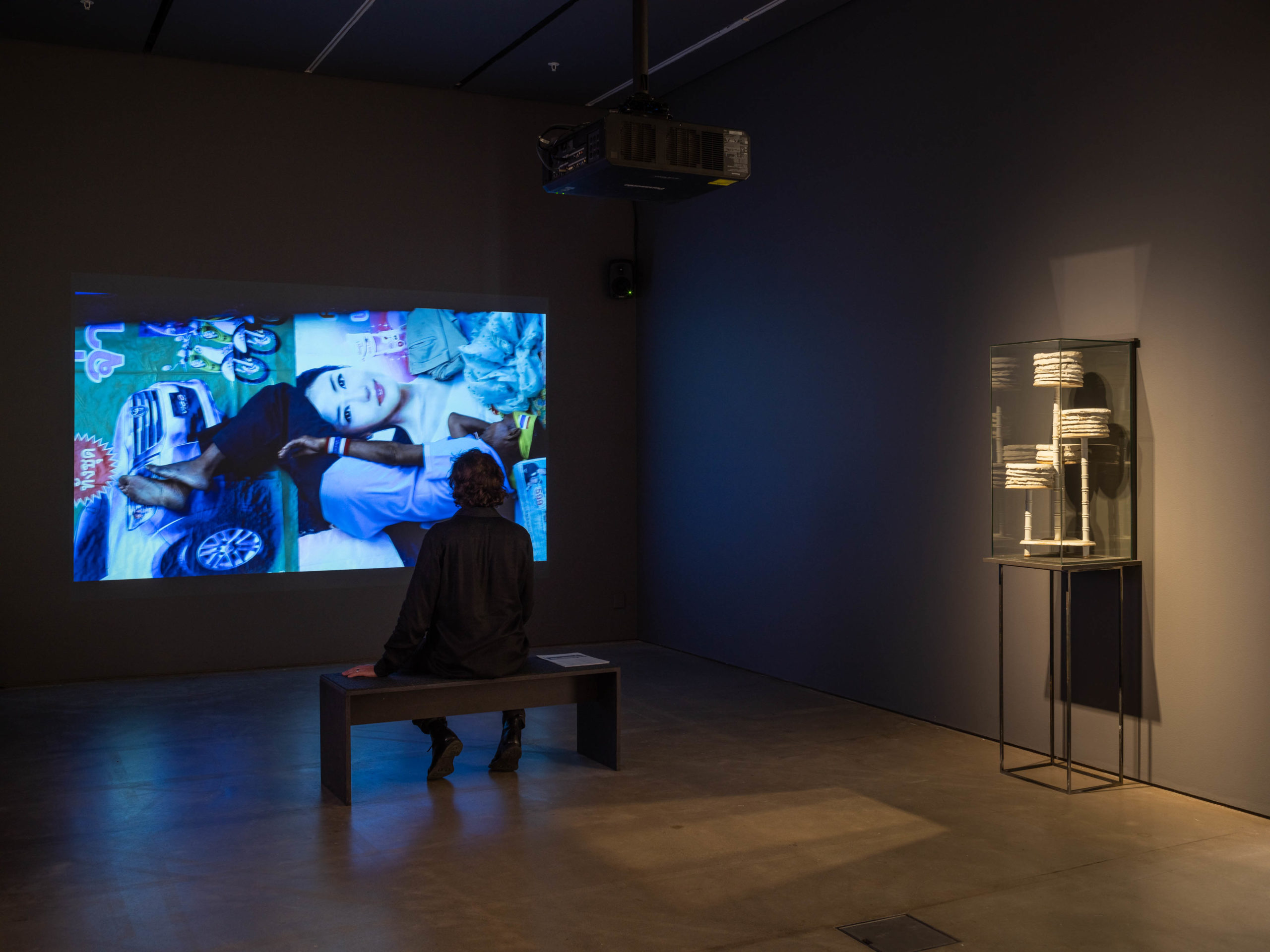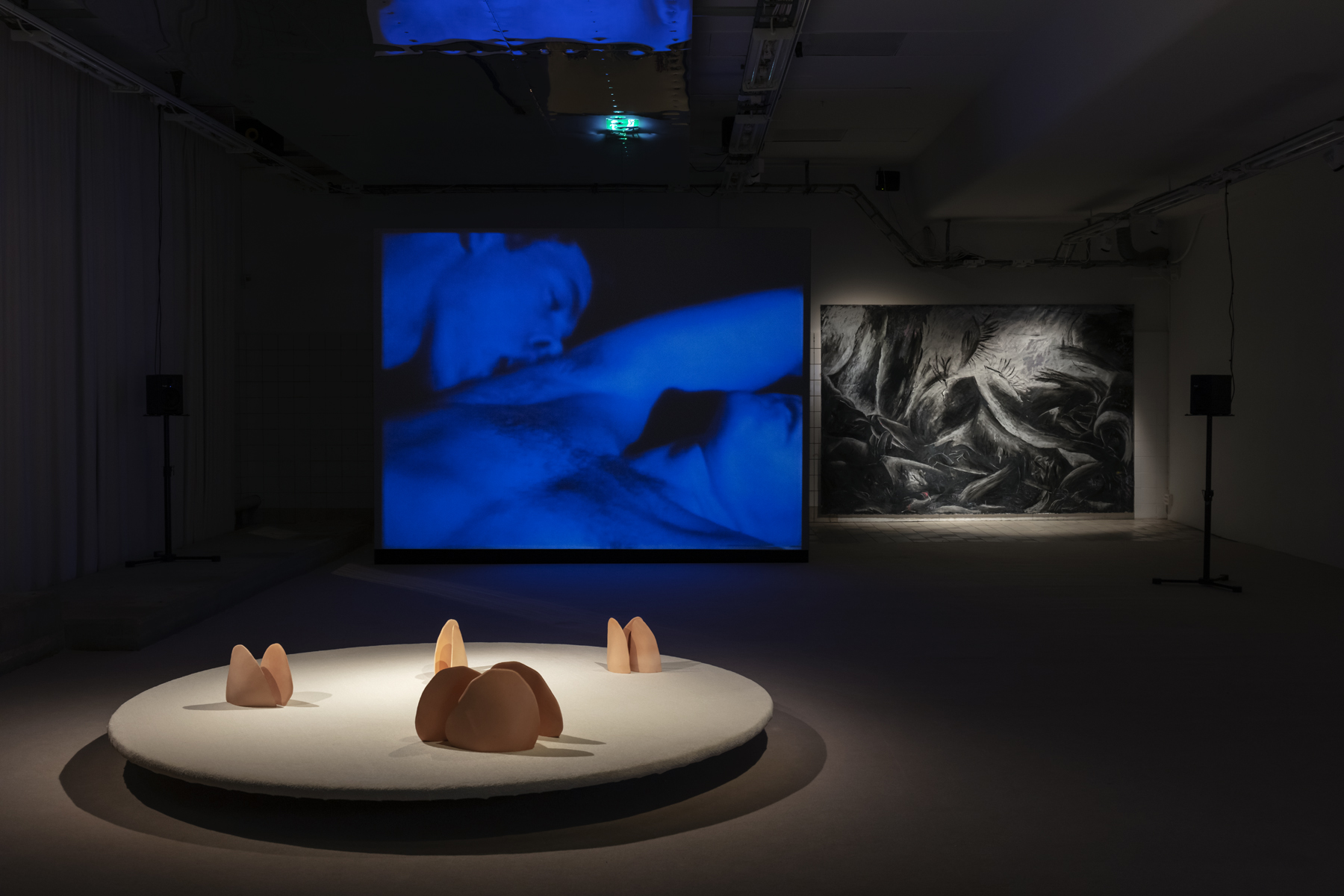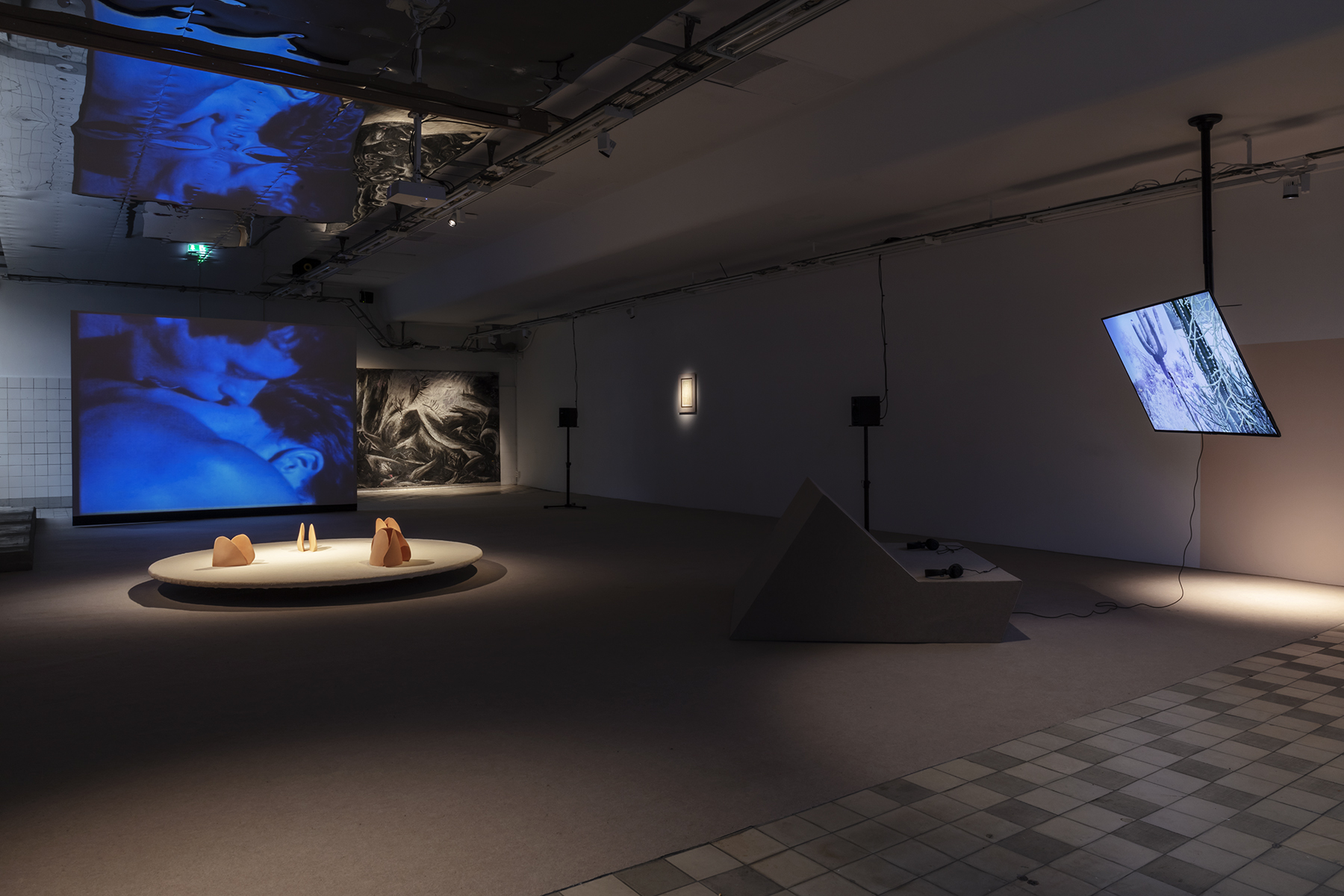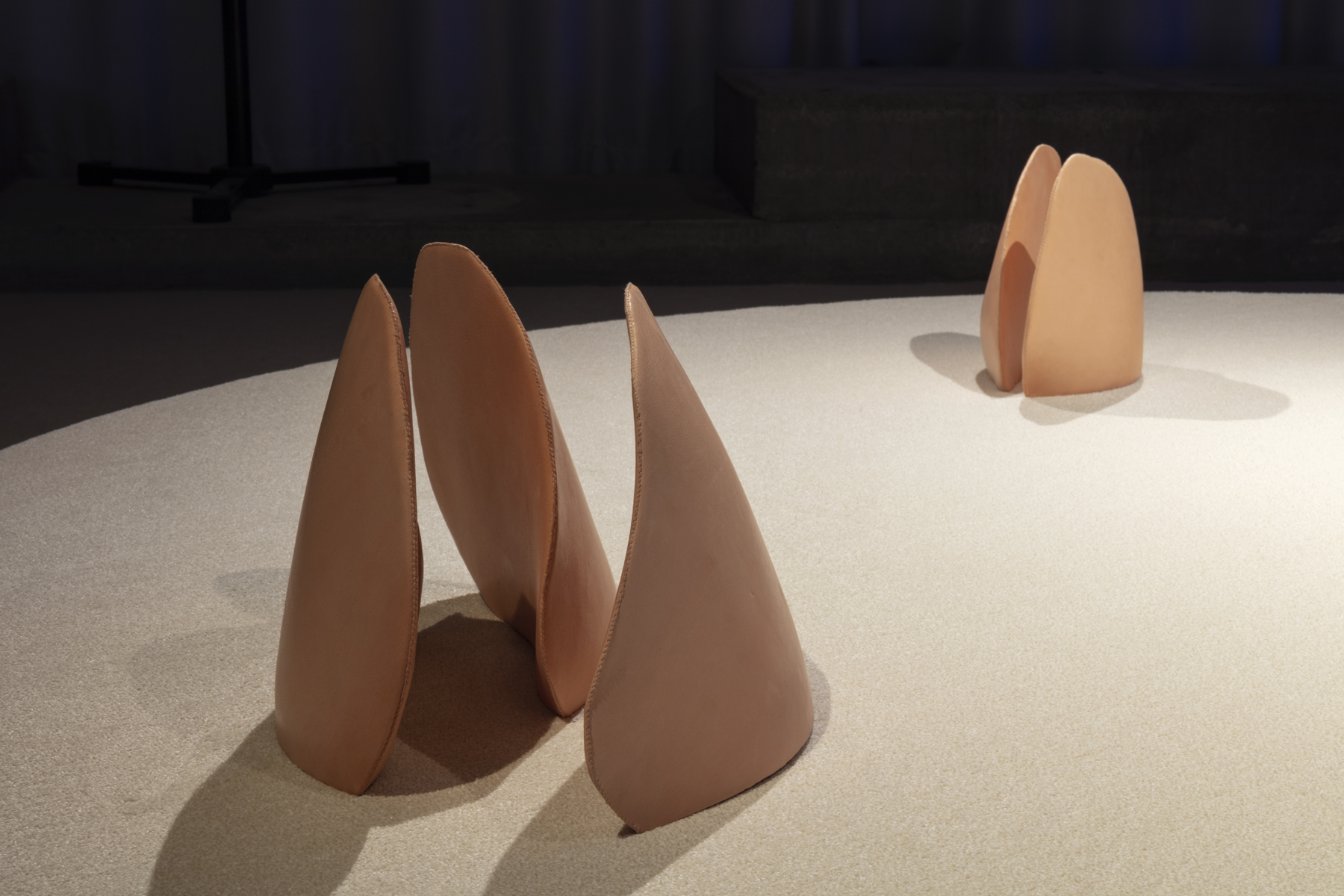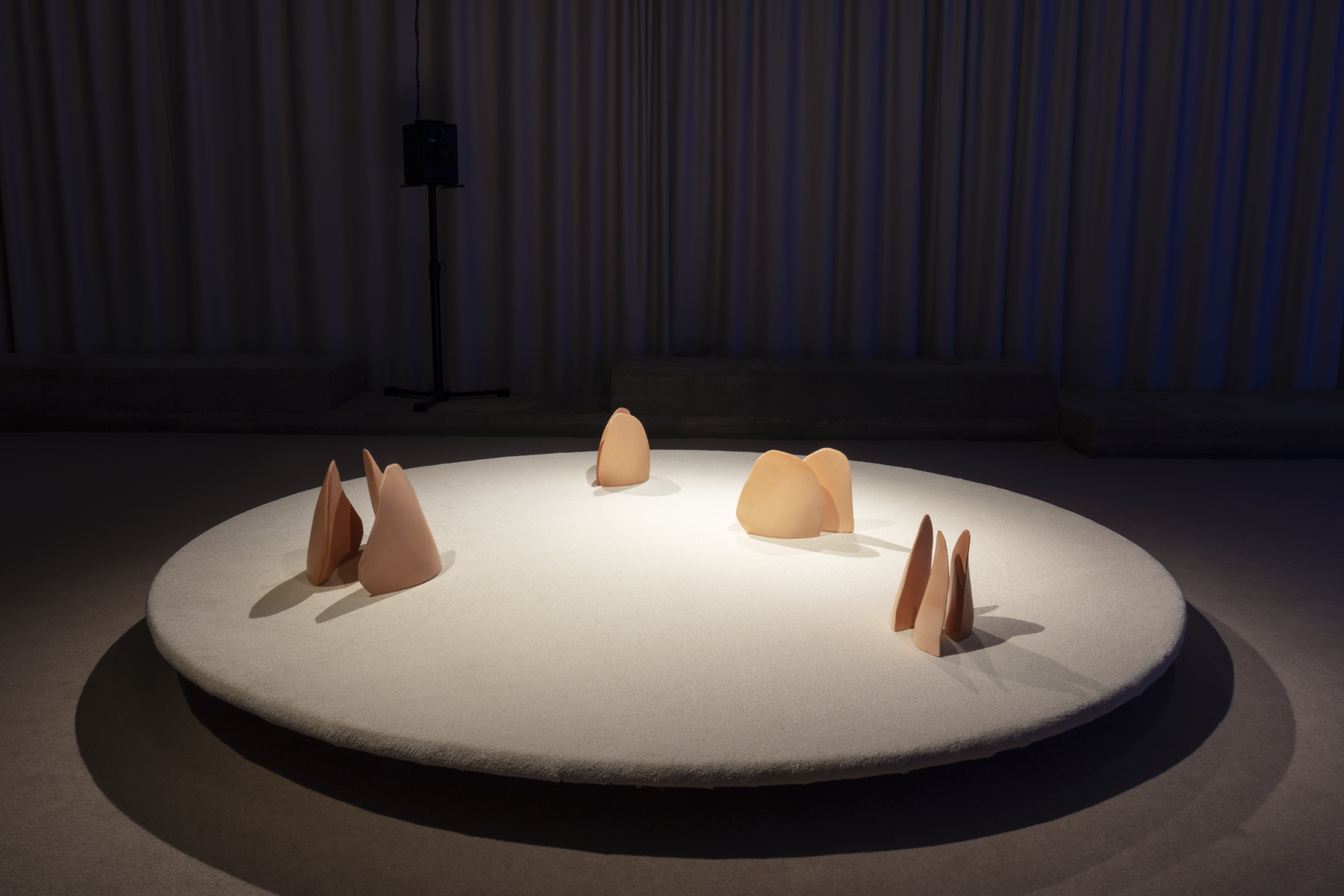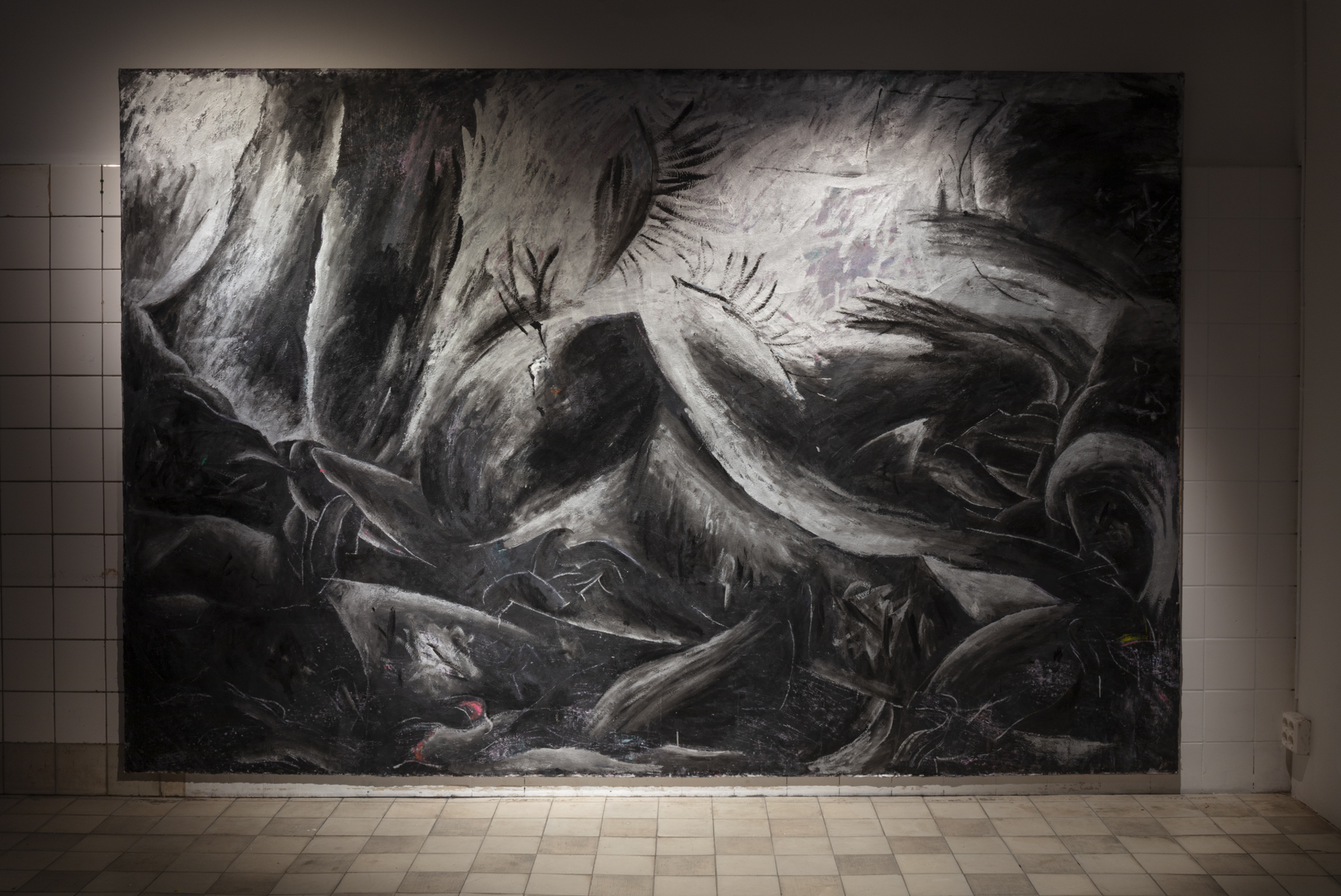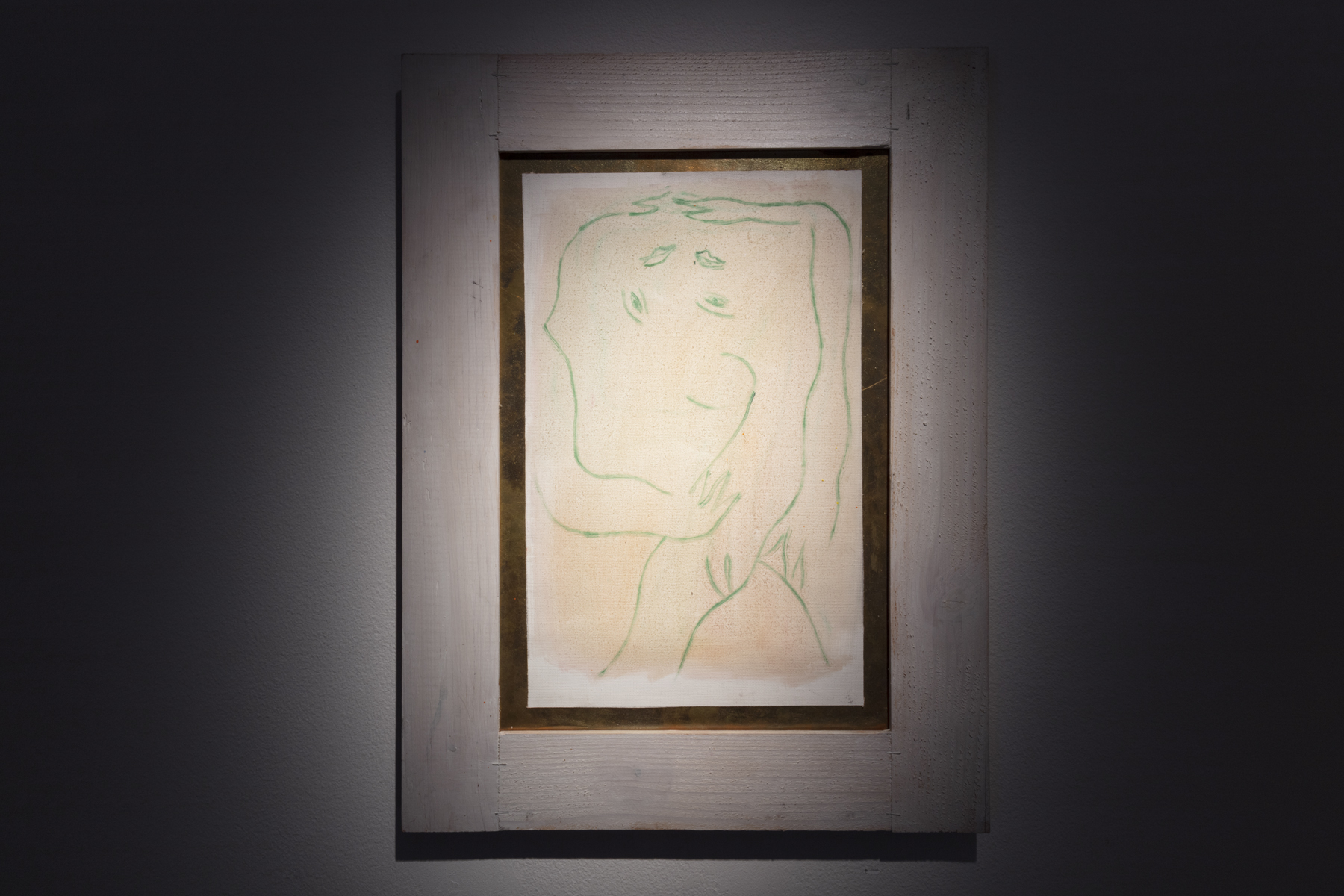Adriana Monti, Annika Elmqvist, Ben Cain, Benedetta Crippa, Christina Zetterlund, David Price, Edith Hammar, Gunilla Lundahl, Jenny Richards, Johanna Minde, Margareta Ståhl, Patrick Lacey and Sarah Browne.
20.11 2019 – 18.1 2020
Mint, ABF Stockholm, Sveavägen 41, Stockholm
Att ta saken i egna händer är en polyfon utställning. Den för samman berättelser, hantverk, görande, plats, illustrationer och verk som utgår från arbetares självorganisering under den fria tidens timmar.
Att ta saken i egna händer
Curator Christina Zetterlund, med Annika Elmqvist och Benedetta Crippa.
Denna utställning tar sin utgångspunkt i det stora projektet I Glasriket – människan, miljön, framtiden som ägde rum mellan åren 1978– 83. Initiativet till projektet togs av ABF i Lessebo och Nybro tillsammans med Svenska Fabriksarbetareförbundets avdelningar 2, 44 och 122. Syftet var att ta saken i egna händer och själva berätta sin historia. Med inspiration från Gunnar Silléns bok Stiga vi mot ljuset (1977) och senare i projektet också Sven Lindqvists Gräv där du står (1978) organiserades drygt 30 studiecirklar för att samla berättelser om arbetet och livet i de många småländska glasbruksorterna. Resultatet blev en brokig historia om yrkeslivet och fritiden, det förmedlades genom 21 innehållsrika böcker, flera utställningar och en bussturné som arrangerades med Riksutställningar. Redogörelserna inbegriper skildringar om allt från berättelser om arbetsvillkor och livet kring bruket, om en självorganisering av arbete, politik, fritid och samhälle till kvinnornas ställning i de mansdominerade bruksorterna. Vi påminns också om de långa och många kamper för rättigheter och att organisera gemenskaper på egna villkor.
Illustration är denna utställnings bärande medium. Ett val som kommer från studiecirklarna där illustrationen blev ett verktyg för att minnas. De 21 böckerna är rikligt illustrerade med cirkeldeltagarnas egna teckningar. På utställningens vänstra vägg har illustratören Annika Elmqvist tolkat foton från böckerna i form av glasmålningar. Hon har format en hyllning till dem som skrev historia, till dem som, trots hårda omständigheter, gick ihop, organiserade sig, bildade föreningar, byggde egna samlingslokaler, studerade och roade sig.
Projektet I Glasriket skriver designhistoria. Det berättar om förutsättningarna för att skapa glas men också om den viktiga sölningspraktiken. Faktum är att vi i bokserien finner en av de få texter som behandlar denna viktiga praktik. Det är ett avsnitt som den grafiska
formgivaren Benedetta Crippa, på utställningens högra vägg, bygger ut till en dekorativ illustration som berättar om praktikens olika fasetter. Sölning var något som glasarbetarna ägnade sig åt på lunchrasten, på sin egen tid. Det var ett sätt att lära sig glashantverket, att komma upp sig i den hierarkiska produktionsprocessen och tjäna mer pengar. Här formades
en föremålskultur av både praktiska vardagsföremål och dekorativa objekt. I utställningen visar vi några exempel på denna kultur. Samtidigt var lunchrasten också en timme av frihet för den skickliga hantverkaren, ett tillfälle att få följa sin nyfikenhet och experimentera. Många glasinnovationer har sina rötter i detta prövande. Men denna form av sölning återfinns varken på museum eller i historieböcker – bara i glasarbetarnas egna hem. De kan på så sätt sägas vara en form av spöken i en traditionell svensk designhistoria. I utställningen kan du ana dem genom Benedetta Crippas illustrationer.
Scuola Senza Fine (1983)
’Mer damm i våra hus, mindre damm i våra hjärnor’ – De 150 timmarna
Organiserat av Jenny Richards och Sarah Browne med Adriana Monti
Adriana Montis film Scuola Senza Fine [Skola utan slut] från 1983, utgår från en grupp av kvinnor som deltog i den betydelsefulla bildningsrörelsen för italienska arbetare under början på 1970-talet. 150 timmar var namnet på ett kontrakt som syftade till att avsätta 150 timmar för att möjliggöra studier under arbetstid. Det var ett avtal som hade förhandlats fram av italienska arbetare inom bil- och stålindustrin 1973. 150 timmars-modellen plockades snabbt upp av andra industriella sektorer såväl som jordbruk för att senare även involvera hemmafruar och arbetslösa.
Centralt för de 150 timmarna var att studierna inte var yrkesinriktade, dvs att de inte arrangerades med avseende på att förbättra den produktiva avkastningen på arbetsplatser, snarare var syftet att på betald tid få möjlighet att diskutera arbetsförhållanden, personlig och kollektiv utveckling. 150 timmarskurserna var influerade av den brasilianske pedagogen och filosofen Paulo Friere, de fokuserade i stor utsträckning på att reflektera levd erfarenhet genom muntlig historia, diskussion och skrivande. Att den fackliga rörelsen också inkluderade obetalda hemmafruar var ett radikalt erkännande av städning, matlagning och omsorg som arbete. De här kvinnornas historia och identiteter som tidigare stått i skuggan av de manliga arbetarna, som spöken i arbetarrörelsen, materialiserades genom 150 timmar. Deras erfarenheter och röster kom att kanaliseras genom en växande feministisk rörelse.
Filmen Scuola Senza Fine producerar ett polyfoniskt uttryck för kollektiv erfarenhet där individen är sammanflätad med kollektivet, det levandegörs i gemensam intimitet som att äta tillsammans under studie-timmarna. I den specifika kontexten på Mint, i ABF-huset som byggts för arbetares bildning och samling, erbjuds en reflektion över arbetares kamp. De 150 timmarna ställs i kontrast till den monumentala målningen över arbetarrörelsens historia av Ruben Nilsson (1893 –1971) i samma rum. Filmen skiljer sig också från dagens arbetsplatser som istället för gemensam tid, erbjuder individualiserad vård, t ex genom rabatterade gymkort eller en kurs i mindfullness för att hantera stressiga arbetsförhållanden. Dessa samtida förhållningssätt söker ’inte förändra industrialiserade socio-politiska strukturer och miljöer, men att förmå individer till att ändra sin inställning till dessa sammanhang’ (Nathoo Ayesha. ‘From Therapeutic Relaxation to Mindfulness in the Twentieth Century’, 2016). Vilka strategier finns det för att skapa plats och tid för att definiera och vägra den alienerande påverkan som arbete har på oss idag?
Som en del av den pågående filmserien Hands at work, organiserat av konstnären Sarah Brown och curatorn Jenny Richards, samt Richards forskningsprojekt Outsourcing the Body.
Scuola Senza Fine distribueras av Cinenova. Cinenova är en ideell organisation som bevarar och distribuerar feministiska film- och videoverk.
Training – Small Semi-Skilled Tasks: Units of Exchange, Labour of Trying, Useful and Non-Useful Goods, Caring for Cast-Offs
Organiserat av Patrick Lacey och David Price, med Ben Cain
I samband med vernissagen arrangeras en release av konstnären Ben Cains bok Uses of Leisure, i samarbete med konstnären och skribenten David Price och formgivaren Patrick Lacey (Åbäke). Publikationen kan ses som en otyglad sammanfattning av en tio-årig konstnärlig praktik inom vilken 30 projekt sorteras efter en subjektiv kategorisering av arbete, fritid och vila. Cains konstnärskap förhandlar arbete och konstnärlig handling. Han har återkommande utforskat konstens tvetydiga förhållande till industri, kommodifiering och immateriellt arbete.
Projektet tar också rumsligt uttryck genom en portabel installation, Training – Small Semi-Skilled Tasks: Units of Exchange, Labour of Trying, Useful and Non-Useful Goods, Caring for Cast-Offs [Träning – små semi-händiga arbeten: Utbytsenheter, testarbeten, användbara och icke-användbara varor, omsorg för kasserade prylar] som breder ut sig på August-galleriets golv under utställningens öppningsdag. Om vilken Ben Cain själv skriver: ”Objekten har anpassats så att de ryms i en liten resväska som ska fraktas från London till Stockholm, här presenteras de i formen av ett gatustånd, det får mig att tänka på den kringresande försäljaren, kanske t o m Arthur Millers pjäs En handelsresandes död, idéer om hur material styrs och utbyts mellan människor samt vad materialen själva förmedlar. Objekten i installationen inkluderar produkter från kreativt och industriellt arbete, samt produkter som inte vittnar om något bakomliggande fysiskt arbete alls, mirakulösa objekt. Vissa av objekten som visas är prover hämtade från trä- och stålverkstäder. Dessa kasserade delar har noggrant valts ut, sandpapprats och putsats, för att sedan pulverlackeras eller målas. Installationen riktar ljuset mot försök som gjorts i strävan att göra något rätt, lära sig något och förstå sig på hur man arbetar med verktyg, material och färger. Verket består av övningar och en uppsättning funna och med avsikt designade objekt, modeller från en existerande arbetsplats och från en arbetsplats i min fantasi. Tillsammans utgör de en modell för en studio eller en nomadisk verkstad, en som uppehåller sig vid ett arbete som inte är särskilt produktivt.” Med stöd från Iaspis.
Plats för slöjd: Jokkmokk
Med Edith Hammar och Johanna Minde
I utställningen visas också samtida hantverk av Johanna Minde (f. 1989) och Edith Hammar (f. 1992) – 2019 års stipendiater av Slöjd Stockholms ’Plats för slöjd’, ett årligt residensprogram som syftar till att främja slöjdfältets utövare. Programmet är en del av en långsiktig utveckling av en publik plattform för att undersöka, lyfta fram och diskutera slöjd och hantverk, samt ställa frågor kring det handgjorda och dess roll och relevans i vår samtid. Här på Mint visas arbeten i process. Hammar och Mindes arbeten har under hösten tagit form i dialog med Jokkmokks lokala kontext och landskap, mer specifikt på Samernas utbildningscentrum. Skolan ger utbildning i duodji/duodje (Skinn, textil, trä/horn), samiska språk: nord-, lule-, ume- och sydsamiska, rennäring och samiskt mathantverk.
Johanna Minde: ”Jag jobbar med traditionella och experimentella metoder inom duodji. Jag utforskar framförallt mötet mellan duodji, design och arkitektur. Under residensperioden i Jokkmokk har jag genom olika garvningsmetoder utforskat renskinnets möjligheter att användas inom formgivning. Genom att bereda skinn med variation på typ av process och grad av genomgarvning har jag testat renskinnets förmåga till ljusgenomsläpp.”
Edith Hammar: ”Skåpet är byggt i furu, inga skruvar eller gångjärn utan byggt med lim och träplugg. Motivet är ganska spontant, självbiografiskt blandat med önsketänkande, precis som mina teckningar i tusch. När jag blivit nöjd med en skiss har jag använt stämjärn i olika storlek för att hugga fram bilderna. Under arbetet i Jokkmokk var jag omgiven av vattendrag och skog, och jag tänkte mycket på min morfar som ofta berättade om när han arbetsemigrerade till Kanada. Hans bästa trick som timmerflottare var att gå ner i split med en fot på varje stock mitt i vattnet.”
